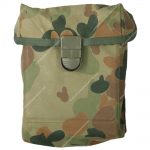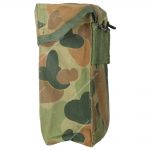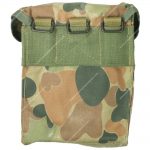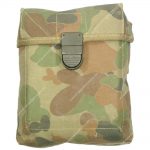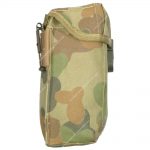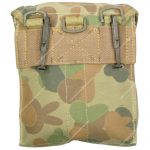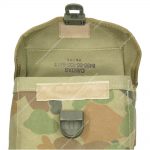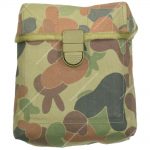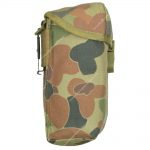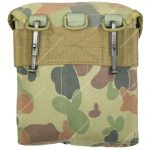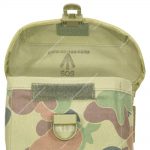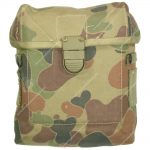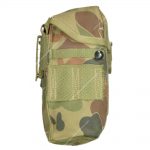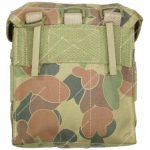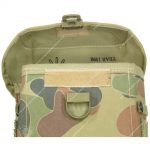Pouch, Ammunition, Minimi
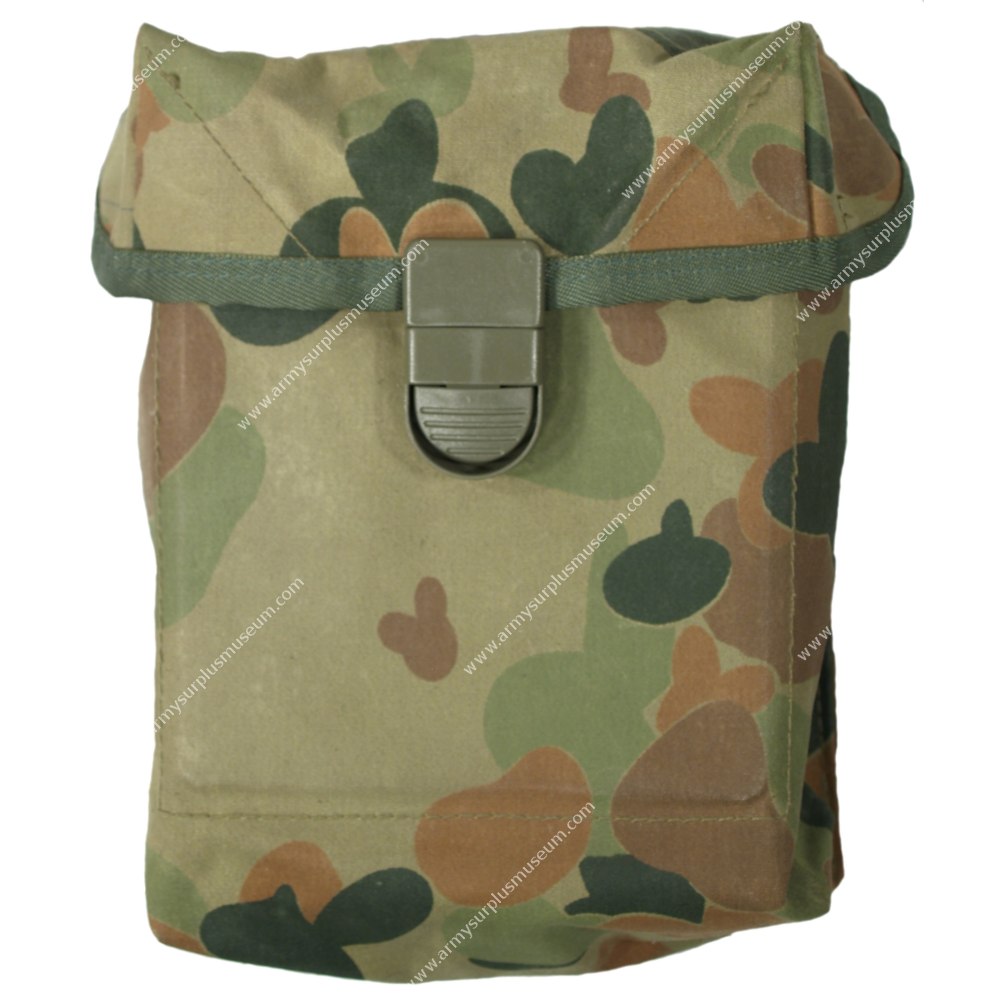
General Information
Name: Pouch, Ammunition, Minimi.
Country of Origin: Australia.
NATO Stock Number (NSN): 8465-66-132-6860.
Camouflage Pattern: Disruptive Pattern Camouflage Uniform (DPCU), Auscam.
Equipment Family: M-1988 Individual Combat Load Carrying Equipment (ICLCE).
Volume Capacity: 4.5L
Size:
Height- 18cm.
Width- 8cm.
Length- 10cm.
Waterproof: Yes, but depends on the condition of the fabric.
For more specific details such as date of production, manufacturer, and weight, see individual examples.
Similar Objects
History
The Pouch, Ammunition, Minimi is a box-shaped magazine pouch designed to hold the Large 200rd box magazine for the F-89 Minimi Light Machine Gun. It was introduced in 1989 as part of the M-1988 Individual Combat Load Carrying Equipment (ICLCE) system, which lacked suitable pouches for this purpose.
Made from cotton and nylon blended canvas, the Pouch features a Disruptive Pattern Camouflage uniform (DPCU) or Auscam pattern to blend in with the uniform. It has a plastic half-tuck buckle for easy one-handed opening and a hook and loop silent closure option behind the buckle. The back of the Pouch has three D-rings at the top for attachment to web suspenders, with the front straps using the two side D-rings and the middle D-ring used by the left or right back strap.
Before the introduction of this Pouch, soldiers had to carry bandoliers of belted ammunition, which often led to sunlight glinting off the exposed rounds and the rounds being dragged through mud and dirt. This resulted in frequent weapon stoppages. With the introduction of this Pouch, soldiers were able to carry the Large 200rd box magazine safely and securely on their person or on their field pack.
In addition to its primary function as a magazine pouch, the Pouch can also be used as a large utility pouch on the web belt or attached to a field pack.
Description
The Pouch is constructed from a blend of polyester and cotton, adorned with a DPCU camouflage pattern. Its lid securely closes with a plastic half-tuck buckle and features a secondary hook and loop closure for added security. On the back face, three plastic D-rings are positioned at the top for attaching web suspenders. Below these rings are four web channels designed to securely hold slide-keepers in place.
Inside, the front face of the Pouch is reinforced with a plastic spacer board, providing protection for contents and maintaining structural rigidity.
Examples
Example One
Example One dates back to approximately 1989, and its manufacturer remains unidentified. It represents an early style that was produced using leftover stocks of Polyurethane (PU) laminated nylon with a green and black mottled camouflage pattern, as well as olive green webbing from the M-1956 (AUST) System. The pouch itself was made of lightweight canvas, the same kind used in the early Styer (F-88) ammunition pouch.
The internal side of the pouch features a lip that is sewn down on the external side to prevent the magazine’s leaf clip from catching on it as it is pulled out. Upon closer inspection, one can observe that the back of the pouch tapers to the left on one side; whether this is a design feature or a production error remains undetermined.
Weight: 250g.
Object Number: 2421-360-36117.
Example Two
Example two was produced in 1990 and manufactured by Cantas. The Pouch is crafted from a sturdier canvas material and incorporates olive green plastic fittings. Additionally, the design now includes a plastic spacer board on its front face, and the lid features a secondary hook and loop fastening option.
Weight: 300g.
Object Number: 2421-360-36110.
Example Three
Example three was produced by SOS Marine in 1992, using modern fabrics and fittings. It does not incorporate any remaining stocks of M-1956 (AUST) fabrics or earlier fittings/equipment systems.
Weight: 300g.
Object Number: 2421-360-35109.
Example four
Example three was produced by SOS Marine in 1998. The Pouch has been updated with a thin nylon webbing strap on both sides, which holds a Toggle Rope securely to the outside of the Pouch using a metal snap-dome.
It’s worth noting that the arrangement of the thin nylon webbing strap and Toggle Rope on Example Three is not unique. This design is also found on the later style of the Pouch, Ammunition, Styer, and is similar to how the Toggle Rope was carried with the M-1956 (AUST) system.
In addition to this feature, the Example Three Pouch also features webbing channels below the webbing straps that allow for attachment of an F-1 Grenade Pouch or a First-Aid/Compass Pouch to the sides of the Pouch. These channels offer a convenient way to expand the Pouch’s storage options and increase its versatility.
Weight: 400g.
Object Number: 2421-360-36111.

